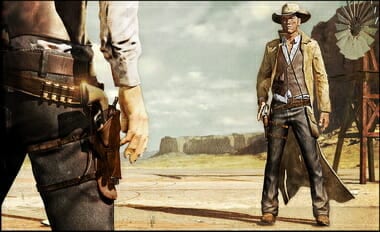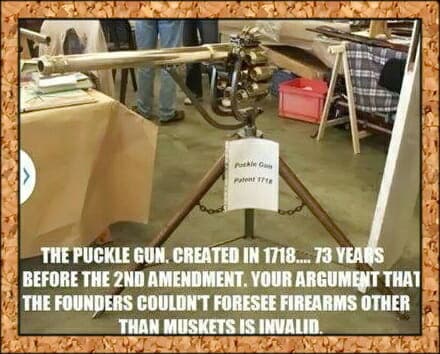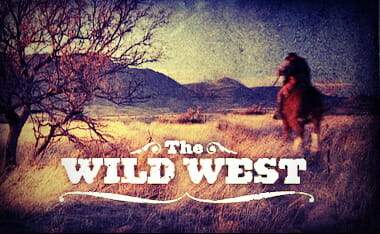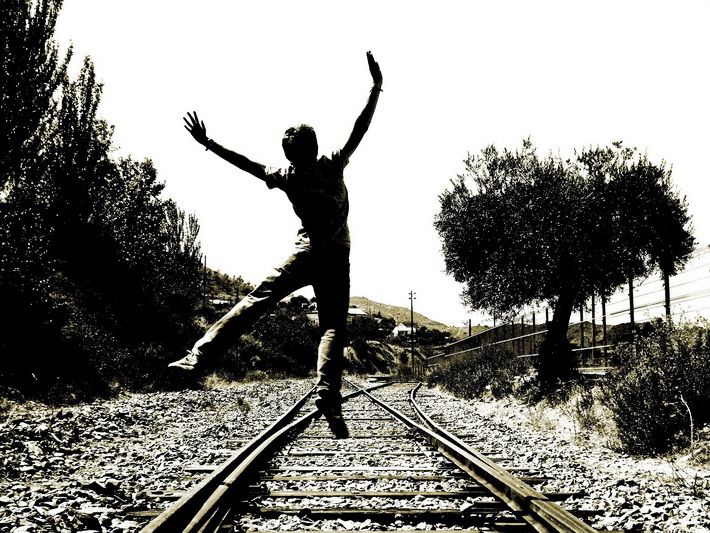Larry Elder interviews Joyce Lee Malcolm, Professor of Law at George Mason University School of Law, a few days after the Mandalay Bay Sniper (sprayer) killed 59-people in Vegas. As usual, this 2nd Amendment historian sheds light on this right enumerated in the Constitution. You can listen to a previous interview with Dr. Malcolm via Larry Elder (May, 2014).
Joyce Lee Malcolm


The 2nd Amendment Was Only For Muskets (Puckle Update)
The First “Assault” Weapon – 1718
(Via FIREARM BLOG) The Puckle Gun is one of those firearms of which only a couple of expamples exist in the world, but which is covered in a great deal of introductory firearms books, usually in their section on the history of machine guns. This has led many to assume the Puckle Gun was some kind of proto-machine gun, which isn’t exactly the case, although it is a very important historical step on the road to modern rapid-fire weaponry. Some discussion will follow below, but first, Forgotten Weapons released an installment on the partial original Puckle Gun located at Reed Knight’s Institute of Military Technology…
[ the video below is here in the Firearm Blog post ]
What makes the Puckle significant to the development of rapid fire guns? Its features. It is one of the earliest, if not the earliest breechloading guns to my knowledge that incorporates all of the following features necessary for a modern rapid-fire gun:
- A method of sealing the chamber to prevent gas escape
- A quick-changeable feeding device for rapid reloading
- Pre-set, integrated priming to elminate the priming stage of loading and protect the priming compound from the environment
Previous breechloaders did incorporate one or two of these features, but Puckle’s gun combined all three to produce a true rapid-fire weapon….
In 1718 the “Puckle gun” [above], the first machine gun, appeared. (One could argue that the so-called “assault rifle pre-dated the Second Amendment.) The Colt revolver followed not long after and in the late 1800s the Gatling gun, which fired 200 rounds per minute, appeared on the market. The evolution of firearms was observable during the time that the Constitution was drafted; to argue that the Founding Fathers were unaware of, or not living through, the ever-evolving capabilities of firearms is blatant ignorance of both common sense and fact. Jefferson himself was a noted collector and in letters explained what technological capabilities he favored in pieces over others in his collection. ~ The Dana Show
1718 the “Puckle gun” [above], the first machine gun, appeared. (One could argue that the so-called “assault rifle pre-dated the Second Amendment.) The Colt revolver followed not long after and in the late 1800s the Gatling gun, which fired 200 rounds per minute, appeared on the market. The evolution of firearms was observable during the time that the Constitution was drafted; to argue that the Founding Fathers were unaware of, or not living through, the ever-evolving capabilities of firearms is blatant ignorance of both common sense and fact. Jefferson himself was a noted collector and in letters explained what technological capabilities he favored in pieces over others in his collection. ~ The Dana Show
A transcript of the above CBS 46 presentation can be found HERE.
RED STATE continues on with this thinking:
…Prior to the Civil War, the Bill of Rights only applied to the federal government and that first Congress dropped references to “as allowed by Law” that had been in the English Bill of Rights. The Founders intended that Congress was to make no law curtailing the rights of citizens to keep and bear arms.
The 2nd Amendment, contrary to much of today’s conversation, has just as much to do with the people protecting themselves from tyranny as it does burglars. That is why there is so little common ground about assault rifles — even charitably ignoring the fact that there really is no such thing. If the 2nd Amendment is to protect the citizenry from even their own government, then the citizenry should be able to be armed.
There are plenty of arguments and bodies to suggest that we might, as a nation, need to rethink this. The Founders gave us that option. We can amend the Constitution.
In doing so, we should keep in mind that in the past 100 years Germany, Italy, Russia, Japan, China, and other governments have turned on their people at various times and, in doing so, restricted freedoms starting often with gun ownership. You may think a 30 round magazine is too big. Under the real purpose of the second amendment, a 30 round magazine might be too small.
Regardless, as the President announces how he will curtail the freedoms of the second amendment, we should remember Justice Robert Jackson’s opinion in West Virginia State Board of Education v. Barnette, 319 U.S. 624 (1943):
The very purpose of a Bill of Rights was to withdraw certain subjects from the vicissitudes of political controversy, to place them beyond the reach of majorities and officials and to establish them as legal principles to be applied by the courts. One’s right to life, liberty, and property, to free speech, a free press, freedom of worship and assembly, and other fundamental rights may not be submitted to vote; they depend on the outcome of no elections.
And the Examiner notes “Pepperbox” and “Volley Guns”
…Put whoever tries to get away with such an unsupportable wild claim on the spot by asking them to explain pepperbox revolvers, multiple barrel handheld firearms based on a concept introduced in the 15th Century, albeit they were initially fired using a match. At the time the Constitution was adopted, pepperboxes had upgraded their technology to flintlock versions, with up to seven barrels rotated by hand.
Then ask them to explain volley guns, first used in 1339.
The Founders experienced first-hand a major technological innovation that yielded a range and accuracy advantage: long guns with rifled barrels, like Kentucky and Pennsylvania rifles, had it all over British standard-issue Brown Bess smooth bore muskets…
The Wild-Wild West:
…How many murders do you suppose these old western towns saw a year? Let’s say the bloodiest, gun-slingingest of the famous cattle towns with the cowboys doing quick-draws at high noon every other day. A hundred? More?
How about five? That was the most murders any old-west town saw in any one year. Ever. Most towns averaged about 1.5 murders a year, and not all of those were shooting. You were way more likely to be murdered in Baltimore in 2008 than you were in Tombstone in 1881, the year of the famous gunfight at the OK Corral (body count: three) and the town’s most violent year ever.
As for the traditional Western gunfight as depicted in movies, the inaccuracy of handguns at the time would have made quick-drawing skill irrelevant: It was simply so unlikely you’d hit a guy on the first, second or third shot that it didn’t really matter which guy got out his gun first. The closest history got to high-noon show downs was dueling, where people just stood across from one another with their guns out, aimed and fired until someone got lucky, and someone else was dead. Forget about “fanning,” rapidly cocking a single-action revolver between rounds like Clint Eastwood does in A Fistful of Dollars. You’d be lucky to hit a henchman if the duel took place in a closet.
Why Do We Believe It?
Because famous gunfighters like Billy the Kid wanted you to believe it. If you’ve seen Young Guns on cable, you probably know the guy was gunning somebody down every ten minutes!
Well according to sources who aren’t Billy The Kid, his lifetime kill count was four. Criminals inflated their murder stats for the same reason guys today inflate their sexual experience: It made them look cool. Towns like Deadwood talked up their violent, lawless natures in order to attract adventurous settlers. Books were written about them and movies were made as soon as cameras were invented, and nobody who’d been out west was rushing to correct the misconceptions because, why the hell would they. A century and a half later, we still love that lie…
Miss Malcolm’s Book has some startling examples of a society gone mad!
Malcolm’s book has shown me that I radically underestimated the danger of gun control. Her detailed study of British legislation on the topic shows the real aim of the disarmers. They wish to abolish the right to armed self-defense entirely. The point is not only to block armed resistance to the state, as I had previously thought; in addition, everyone is to be made totally dependent on the state for protection.
Some of Malcolm’s examples are shocking. In England “[m]erely threatening to defend oneself can also prove illegal, as an elderly lady discovered. She succeeded in frightening off a gang of thugs by firing a blank from a toy gun, only to be arrested for the crime of putting someone in fear with an imitation firearm” (p. 184).
Not even if one’s life is in danger can one legally use a weapon. In another case, two men assaulted Eric Butler in a subway, smashing his head and choking him. “In desperation he unsheathed a sword blade in his walking stick and slashed at one of them. . . . The assailants were charged with unlawful wounding but Butler was also tried, and convicted of carrying an offensive weapon” (p. 185).
You can imagine the legal position if someone goes so far as to use a real gun to defend himself. As British law now stands, you cannot even use a gun in your own home to defend yourself against burglars. In a 1999 incident, Tony Martin surprised a professional burglar and his accomplice while they robbed his home. He fired, killing one of them.
Did the government commend Martin for his bravery in confronting the burglars? Quite the contrary, they tried and convicted him for murder. “Thus an English farmer, living alone, has been sentenced to life in prison for killing one professional burglar and ten years for wounding another when the two broke into his home at night” (p. 216). Fortunately, our story has a “happy” ending: the court of appeals reduced his sentence to five years, on grounds of “diminished capacity.”
[….]
Gun control advocates, faced with these facts, will at once begin to yammer uncontrollably, “a correlation is not a cause.” Indeed it is not; but in this instance, a strong correlation holds in two ways: when guns increase in number, violent crimes decrease, and when guns decrease, violent crimes increase. Further, a plausible causal story explains the correlation: the prospect of armed resistance deters criminals. This is about as good as an inductive argument gets. But I do not anticipate that those who wish to take away the right to self-defense will alter their position. They aim to make everyone totally dependent on the all-powerful state….
(Guns and Violence: The English Experience, Joyce Lee Malcolm)

European Happiness and Crime Rates Compared To America’s
“It’s become common knowledge that Denmark, Sweden and Norway routinely rank highest on lists of the world’s happiest nations…” (The World’s Happiest Countries Take The Most Antidepressants)
(As usual, all graphics/pics are linked to other resources.) Often I hear about how much lower the crime rate is in Europe, at times having the “Peace Index” thrown into the conversation without any meditation on what exactly this “index” says. Happiness is another moniker often thrown around without any comparisons of “what constitutes ‘happiness’.” So lets deal first with happiness, and then get into the peace index and gun-control/stats.
HAPPINESS
What constitutes happiness between the States and Europe? Let’s delve — quickly — into this topic via Forbes (2006):
The average American works 25 hours a week; the average Frenchman 18; the average Italian a bit more than 16 and a half. Even the hardest-working Europeans–the British, who put in an average of 21 and half hours–are far more laid-back than their American cousins.
Compared with Europeans, Americans are more likely to be employed and more likely to work longer hours–employed Americans put in about three hours more per week than employed Frenchmen. Most important, Americans take fewer (and shorter) vacations. The average American takes off less than six weeks a year; the average Frenchman almost 12. The world champion vacationers are the Swedes, at 16 and a half weeks per year.
Of course, Europeans pay a price for their extravagant leisure. The average Frenchman produces only three-quarters as much as the average American, even though productivity per hour is slightly higher in France.
This raises more than one interesting question. First, why do Americans choose to work so much? (Or, if you prefer, why do Europeans choose to work so little?) Second, who’s happier?…..
Why indeed.
I think this is answered a bit later in a newer poll/study, found at Live Science (see also FoxNews):
Americans really do love to work, it seems, while Europeans are much happier if they skip burning the midnight oil in favor of leisure. That’s according to a new study finding longer work hours make Europeans unhappy while Americans get a very slight (albeit not statistically significant) bliss boost from the extra grind.
“Those who work longer hours in Europe are less happy than those who work shorter hours, but in the U.S. it’s the other way around,” said study author Adam Okulicz-Kozaryn, a clinical assistant professor of public policy at The University of Texas at Dallas. “The working hours’ category does not have a very big impact on the probability of happiness of Americans.” [Happiest States’ List]
The study, based on survey data, can’t tease out whether work causes happiness or unhappiness, though the researchers speculate the effect has to do with expectations and how a person measures success.
Okulicz-Kozaryn used surveys of European and American attitudes for the study. The surveys included questions about the number of hours worked and asked respondents to identify if they were “very happy,” “pretty happy” or “not too happy.”
They found that the likelihood of Europeans’ describing themselves as “very happy” dropped from around 28 percent to 23 percent as work hours climbed from under 17 hours a week to more than 60 hours per week. Americans, on the other hand, held steady, with about a 43 percent chance of describing themselves as happy regardless of working hours.
The results held even after the researchers accounted for possible confounding factors, such as age, marital status and household income….
[….]
“Happiness depends upon satisfaction with your income, satisfaction with you family life, satisfaction with your work, satisfaction with your health,” he said.
“People trade off work and leisure,” Easterlin explained, and so any attempt to explain the results of this study would have to take that into account. “[Happiness] has to do with what you think the goals are of people in the two countries.”
American happiness is a pursuit important enough to include in one of our Founding documents, right next to life and liberty. This “pursuit” we are use to (and is being harmed/deformed by the welfare state growing larger) creates innovation. For instance David Mamet notes the following:
In my family, as in yours, someone regularly says, “Hey, you know what would be a good idea … ?” And then proceeds to outline some scheme for making money by providing a product or service the need for which has just occurred to him. He and the family fantasize about and discuss and elaborate this scheme. Inherent in this fantasy is the unstated but ever-present truth that, given sufficient capital and expertise or the access to the same, the scheme might actually be put into operation (as, indeed, constantly, throughout our history, such schemes have), bettering the lives of the masses and bringing wealth to their creators. Do you believe such conversations take place in Syria? In France?
David Mamet, The Secret Knowledge: On the Dismantling of American Culture (New York, NY: Sentinel Publishing, 2011), [FN] 120.
Some can be happy with less pay and trusting the state will care for them enough to go on 12-week vacations. While doctors, for instance, may enjoy a month-long vacation in France [mandatory vacation], this “happiness” rather than hard-work often has deadly consequences, one being — for instance — nearly 15,000 people dying in a heat wave in France in 2003 (a record for Europe… previously Italy held it with 3,000).
- …Health Minister Jean-Francois Mattei has ordered a separate special study this month to look into a possible link with vacation schedules after doctors strongly denied allegations their absence put the elderly in danger. The heat wave hit during the August vacation period, when doctors, hospital staff and many others take leave…
So Europe being “happier” than the United States is something of a misnomer.
“Life, Liberty and the pursuit of Happiness.” We pursue it, not expecting government to provide it for us. If government doeas, a simple economic law states — basically — that creativity is squelched:
- “A fundamental principle of information theory is that you can’t guarantee outcomes… in order for an experiment to yield knowledge, it has to be able to fail. If you have guaranteed experiments, you have zero knowledge”
George Gilder, Interview by Dennis Prager {Editors note: this is how the USSR ended up with warehouses FULL of “widgets” (things made that it could not use or people did not want) no one needed in the real world.}
When people do, austerity more-often-than-not leads to riots and collapse. And why in many European countries the EU is being rejected, and conservative parties are getting landslides (like UKIP in the UK). People are fed up with horrible health care, no incentive to succeed, taxes, crime, and immigration issues. 
Okay, I feel my point has been made. Innovation comes by a drive to work hard, as much as you wish in fact… whereas Europe forces people to work less, and thus is stagnant in relation to this said innovation. What about crime rates and violence, yes, even gun violence? Lets see. Firstly, I deal with some of the more pressing issues with the Peace Index here. But in this conversation, I wanted to deal with violent crimes… which include more than gun violence. As Europe gives birth to a generation divorced of their cultural heritage, you will see a rise in violence, and then a rise in reaction to it. Maybe an over-reaction?
VIOLENCE
Firstly, if you are an in-depth kind of reader, at this link you will find multiple debates and appearances of John Lott on CNN and other programs discussing gun crime. But let’s deal with a place that has for years made gun ownership illegal, the United Kingdom. Here is the headline from The Telegraph on the topic:
Analysis of figures from the European Commission showed a 77 per cent increase in murders, robberies, assaults and sexual offences in the UK since Labour came to power.
The total number of violent offences recorded compared to population is higher than any other country in Europe, as well as America, Canada, Australia and South Africa.
Opposition leaders said the disclosures were a “damning indictment” of the Government’s failure to tackle deep-rooted social problems.
The figures combined crime statistics for England, Wales, Scotland and Northern Ireland.
The UK had a greater number of murders in 2007 than any other EU country – 927 – and at a relative rate higher than most western European neighbours, including France, Germany, Italy and Spain.
It also recorded the fifth highest robbery rate in the EU, and the highest absolute number of burglaries, with double the number of offences recorded in Germany and France.
Overall, 5.4 million crimes were recorded in the UK in 2007 – more than 10 a minute – second only to Sweden.
Chris Grayling, shadow home secretary, said: “This is a real damning indictment of this government’s comprehensive failure over more than a decade to tackle the deep rooted social problems in our society, and the knock-on effect on crime and anti-social behaviour.
“We’re now on our fourth Home Secretary in this parliament, and all we are getting is a rehash of old initiatives that didn’t work the first time round. More than ever Britain needs a change of direction.”
The figures were sourced from Eurostat, the European Commission’s database of statistics. They are gathered using official sources in the countries concerned such as the national statistics office, the national prison administration, ministries of the interior or justice, and police.
A breakdown of the statistics, which were compiled into league tables by the Conservatives, revealed that violent crime in the UK had increased from 652,974 offences in 1998 to more than 1.15 million crimes in 2007.

It means there are over 2,000 crimes recorded per 100,000 population in the UK, making it the most violent place in Europe.
Austria is second, with a rate of 1,677 per 100,000 people, followed by Sweden, Belgium, Finland and Holland.
By comparison, America has an estimated rate of 466 violent crimes per 100,000 population.
France recorded 324,765 violent crimes in 2007 – a 67 per cent increase in the past decade – at a rate of 504 per 100,000 population.
Which segways into a recent comparison in crime and gun-control in a Wall Street Journal article by Joyce Lee Malcolm, entitled: “Two Cautionary Tales of Gun Control: After a school massacre, the U.K. banned handguns in 1998. A decade later, handgun crime had doubled.” Here is an interview of her in regards to the article, followed by excerpts from said article:
Larry Elder Interview & Wall Street Journal Article
Here are portions of the article:
…Great Britain and Australia, for example, suffered mass shootings in the 1980s and 1990s. Both countries had very stringent gun laws when they occurred. Nevertheless, both decided that even stricter control of guns was the answer. Their experiences can be instructive.
In 1987, Michael Ryan went on a shooting spree in his small town of Hungerford, England, killing 16 people (including his mother) and wounding another 14 before shooting himself. Since the public was unarmed—as were the police—Ryan wandered the streets for eight hours with two semiautomatic rifles and a handgun before anyone with a firearm was able to come to the rescue.
Nine years later, in March 1996, Thomas Hamilton, a man known to be mentally unstable, walked into a primary school in the Scottish town of Dunblane and shot 16 young children and their teacher. He wounded 10 other children and three other teachers before taking his own life.
Since 1920, anyone in Britain wanting a handgun had to obtain a certificate from his local police stating he was fit to own a weapon and had good reason to have one. Over the years, the definition of “good reason” gradually narrowed. By 1969, self-defense was never a good reason for a permit.
After Hungerford, the British government banned semiautomatic rifles and brought shotguns—the last type of firearm that could be purchased with a simple show of fitness—under controls similar to those in place for pistols and rifles. Magazines were limited to two shells with a third in the chamber.
Dunblane had a more dramatic impact. Hamilton had a firearm certificate, although according to the rules he should not have been granted one. A media frenzy coupled with an emotional campaign by parents of Dunblane resulted in the Firearms Act of 1998, which instituted a nearly complete ban on handguns. Owners of pistols were required to turn them in. The penalty for illegal possession of a pistol is up to 10 years in prison.
The results have not been what proponents of the act wanted. Within a decade of the handgun ban and the confiscation of handguns from registered owners, crime with handguns had doubled according to British government crime reports. Gun crime, not a serious problem in the past, now is. Armed street gangs have some British police carrying guns for the first time. Moreover, another massacre occurred in June 2010. Derrick Bird, a taxi driver in Cumbria, shot his brother and a colleague then drove off through rural villages killing 12 people and injuring 11 more before killing himself.
[….]
Six weeks after the Dunblane massacre in 1996, Martin Bryant, an Australian with a lifelong history of violence, attacked tourists at a Port Arthur prison site in Tasmania with two semiautomatic rifles. He killed 35 people and wounded 21 others.
At the time, Australia’s guns laws were stricter than the United Kingdom’s. In lieu of the requirement in Britain that an applicant for permission to purchase a gun have a “good reason,” Australia required a “genuine reason.” Hunting and protecting crops from feral animals were genuine reasons—personal protection wasn’t.
With new Prime Minister John Howard in the lead, Australia passed the National Firearms Agreement, banning all semiautomatic rifles and semiautomatic and pump-action shotguns and imposing a more restrictive licensing system on other firearms. The government also launched a forced buyback scheme to remove thousands of firearms from private hands. Between Oct. 1, 1996, and Sept. 30, 1997, the government purchased and destroyed more than 631,000 of the banned guns at a cost of $500 million.
To what end? While there has been much controversy over the result of the law and buyback, Peter Reuter and Jenny Mouzos, in a 2003 study published by the Brookings Institution, found homicides “continued a modest decline” since 1997. They concluded that the impact of the National Firearms Agreement was “relatively small,” with the daily rate of firearms homicides declining 3.2%.
According to their study, the use of handguns rather than long guns (rifles and shotguns) went up sharply, but only one out of 117 gun homicides in the two years following the 1996 National Firearms Agreement used a registered gun. Suicides with firearms went down but suicides by other means went up. They reported “a modest reduction in the severity” of massacres (four or more indiscriminate homicides) in the five years since the government weapons buyback. These involved knives, gas and arson rather than firearms.
In 2008, the Australian Institute of Criminology reported a decrease of 9% in homicides and a one-third decrease in armed robbery since the 1990s, but an increase of over 40% in assaults and 20% in sexual assaults.
What to conclude? Strict gun laws in Great Britain and Australia haven’t made their people noticeably safer, nor have they prevented massacres. The two major countries held up as models for the U.S. don’t provide much evidence that strict gun laws will solve our problems.
Ms. Malcolm, a professor of law at George Mason University Law School, is the author of several books including “Guns and Violence: The English Experience,” (Harvard, 2002).
Of course America’s worst massacre involving a school is the Bath Bombing (below), Michigan (1927). And a bomb killed 168 people in the Oklahoma City Bombing. So if someone wants to kill another… no amount of government regulation will decrease this fact:
- “…we have no government, armed with power, capable of contending with human passions, unbridled by morality and religion. Avarice, ambition, revenge and licentiousness would break the strongest cords of our Constitution, as a whale goes through a net. Our Constitution was made only for a moral and religious people. It is wholly inadequate to the government of any other.”
John Adams, first (1789–1797) Vice President of the United States, and the second (1797–1801) President of the United States. Letter to the Officers of the First Brigade of the Third Division of the Militia of Massachusetts, 11 October 1798, in Revolutionary Services and Civil Life of General William Hull (New York, 1848), pp 265-6.

THE WILD-WILD WEST: The Unfounded Assertion of Gun-Control Advocates
Not “wild” at all, but in reality…
How many murders do you suppose these old western towns saw a year? Let’s say the bloodiest, gun-slingingest of the famous cattle towns with the cowboys doing quick-draws at high noon every other day. A hundred? More?
How about five? That was the most murders any old-west town saw in any one year. Ever. Most towns averaged about 1.5 murders a year, and not all of those were shooting. You were way more likely to be murdered in Baltimore in 2008 than you were in Tombstone in 1881, the year of the famous gunfight at the OK Corral (body count: three) and the town’s most violent year ever.
As for the traditional Western gunfight as depicted in movies, the inaccuracy of handguns at the time would have made quick-drawing skill irrelevant: It was simply so unlikely you’d hit a guy on the first, second or third shot that it didn’t really matter which guy got out his gun first. The closest history got to high-noon show downs was dueling, where people just stood across from one another with their guns out, aimed and fired until someone got lucky, and someone else was dead. Forget about “fanning,” rapidly cocking a single-action revolver between rounds like Clint Eastwood does in A Fistful of Dollars. You’d be lucky to hit a henchman if the duel took place in a closet.
Why Do We Believe It?
Because famous gunfighters like Billy the Kid wanted you to believe it. If you’ve seen Young Guns on cable, you probably know the guy was gunning somebody down every ten minutes!
Well according to sources who aren’t Billy The Kid, his lifetime kill count was four. Criminals inflated their murder stats for the same reason guys today inflate their sexual experience: It made them look cool. Towns like Deadwood talked up their violent, lawless natures in order to attract adventurous settlers. Books were written about them and movies were made as soon as cameras were invented, and nobody who’d been out west was rushing to correct the misconceptions because, why the hell would they. A century and a half later, we still love that lie…
Miss Malcolm’s Book has some startling examples of a society gone mad, the Brits/English!
Malcolm’s book has shown me that I radically underestimated the danger of gun control. Her detailed study of British legislation on the topic shows the real aim of the disarmers. They wish to abolish the right to armed self-defense entirely. The point is not only to block armed resistance to the state, as I had previously thought; in addition, everyone is to be made totally dependent on the state for protection.
Some of Malcolm’s examples are shocking. In England “[m]erely threatening to defend oneself can also prove illegal, as an elderly lady discovered. She succeeded in frightening off a gang of thugs by firing a blank from a toy gun, only to be arrested for the crime of putting someone in fear with an imitation firearm” (p. 184).
Not even if one’s life is in danger can one legally use a weapon. In another case, two men assaulted Eric Butler in a subway, smashing his head and choking him. “In desperation he unsheathed a sword blade in his walking stick and slashed at one of them. . . . The assailants were charged with unlawful wounding but Butler was also tried, and convicted of carrying an offensive weapon” (p. 185).
You can imagine the legal position if someone goes so far as to use a real gun to defend himself. As British law now stands, you cannot even use a gun in your own home to defend yourself against burglars. In a 1999 incident, Tony Martin surprised a professional burglar and his accomplice while they robbed his home. He fired, killing one of them.
Did the government commend Martin for his bravery in confronting the burglars? Quite the contrary, they tried and convicted him for murder. “Thus an English farmer, living alone, has been sentenced to life in prison for killing one professional burglar and ten years for wounding another when the two broke into his home at night” (p. 216). Fortunately, our story has a “happy” ending: the court of appeals reduced his sentence to five years, on grounds of “diminished capacity.”
[…]
Gun control advocates, faced with these facts, will at once begin to yammer uncontrollably, “a correlation is not a cause.” Indeed it is not; but in this instance, a strong correlation holds in two ways: when guns increase in number, violent crimes decrease, and when guns decrease, violent crimes increase. Further, a plausible causal story explains the correlation: the prospect of armed resistance deters criminals. This is about as good as an inductive argument gets. But I do not anticipate that those who wish to take away the right to self-defense will alter their position. They aim to make everyone totally dependent on the all-powerful state.



